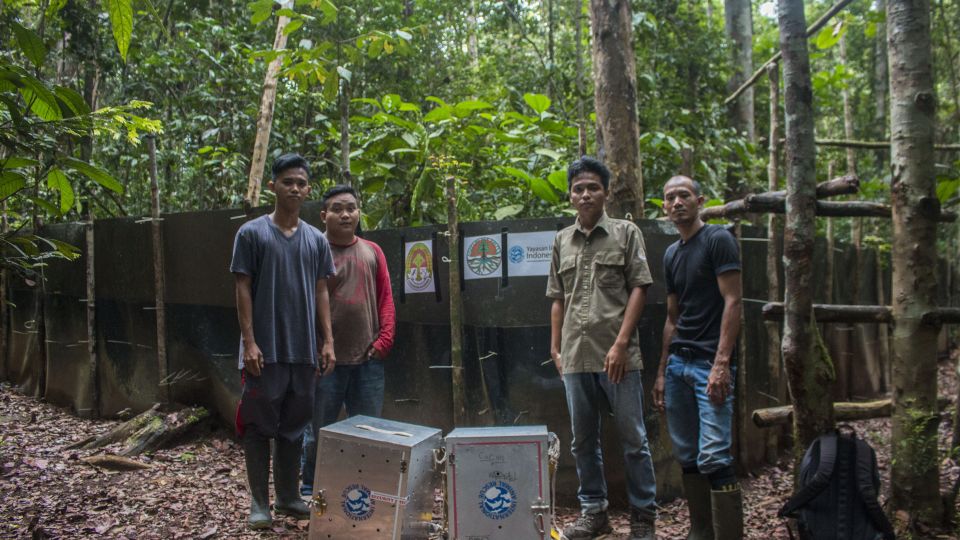
At the end of May our team in Ketapang, West Borneo released three slow lorises in Gunung Tarak, a protected forest about five hours’ drive from our rehabilitation centre. They are called Lawu, Tara, and Tasya.
Lawu is a sub-adult male slow loris rescued on 13 April 2017. He was from Temajuk in the north west of Borneo and sadly all his canine teeth had been clipped off. Our medical team performed dental surgery on his broken teeth which was very successful. Now Lawu is able to eat well and has reached his ideal weight.
Tari is an adult female loris from Pontianak. She was bought from a trader and kept as a pet for a week before she was rescued and admitted to our centre on 18 June 2016. When Tari arrived she had a severe infection in the remnants of her clipped teeth and gums. She was also suffering from malnutrition and hair loss. Tari had to undergo three dental surgeries to repair the damage to her mouth. After the final surgery, she displayed good natural, wild behaviour and was identified as a suitable candidate for release.
Tasya is also an adult female loris from Pontianak. She was still a baby when she was rescued on 9 July 2015. Even at her young age, Tasya had had her teeth clipped and had to undergo two sessions of dental surgery to repair the damage she had suffered.

The three slow lorises were released into the habituation enclosure inside Gunung Tarak. As all the lorises have endured some damage to their teeth, they are unable to extract gum from the trees. Therefore our team carried out surveys for a suitable area to ensure they can forage the necessary fruits and insects. Our monitoring team will observe the lorises for a month, and when they are happy they are feeding well, the lorises will be given complete freedom of the forest.
Alan Knight OBE, IAR’s Chief Executive, said: “We’re thrilled to see these three lorises returning to their rightful home in the rainforest. Our team in Ketapang has done a fantastic job of treating their wounds and caring for them. The rehabilitation of these extraordinary primates is often lengthy and complex but absolutely worth it in order to conserve as many of these endangered primates as we possibly can.”

